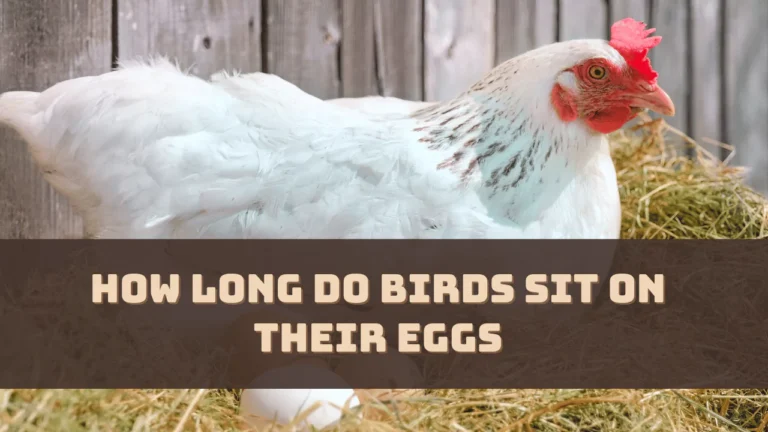Yes, eagles are occasionally found to eat worms which make up 5% of their diet. However, it might be hard to believe, as eagles are carnivores or birds of prey with excellent hunting qualities, so it is quite easy for them to feed on small mammals, birds, etc.
Now, let’s delve into the diet of eagles and understand when eagles eat worms or invertebrates.
What is the Diet of Eagles?
Eagles depend on meat from fish, small mammals, reptiles, and birds, which make it their primary food source. However, in occasional cases, when there is a scarcity of food sources, they can consume worms or small invertebrates. They also consume carrions, playing a vital role in reducing the spread of disease.
An eagle’s dietary habit is influenced by their habitats, so, let’s elaborate on their preferred food sources:
Fish
Their primary diet is fish as they have remarkable fishing skills. Fishes are available in abundance and also have high nutritional value making them a primary consideration. Fishes have excessive protein and vitamin content which help the eagles to get the required nutrition for growth and development. They use their sharp talons to sweep down and grab fish from the water.
Small Mammals
Eagles feed on small birds, mammals, and reptiles which are easily caught by their sharp vision and powerful talons. The list of small mammals includes mice and rabbits. They also consume snakes, frogs, and lizards, as they are opportunist environment-friendly hunters. They are also aerial predators and capture pigeons or smaller raptors in mid-air.
Carrions
Eagles are known as scavengers and they feed on carrions, which support them to get nutrition and survive. By consuming carrions, eagles help to maintain an ecological balance and also prevent diseases that can spread from decaying animals. It also makes carrion decomposition easier, recycling the nutrients back to the ecosystem.
When do Eagles Eat Worms and What are the Benefits?
Actively looking at or pulling out worms from the ground is not an eagle’s standard habit. Worms are also less accessible so only in rare cases, eagles are seen hovering around to catch these soil or aquatic-dwelling worms.
Worms are beneficial for the Eagles, as they contain essential amino acids that are required for the growth and maintenance of muscles and tissues. These invertebrates also have vitamin E, iron, and zinc, and consuming worms can prove to be a great supplement, particularly at the time of the breeding season, when the eagles require support for the growth of the young ones. Worms help to maintain healthy bones and also regulate bodily fluids.
Worms are also ideal food as they are easy to digest and depending on the habitat of the eagles, worms can be easily found. When compared with other eagle species, the Crested Serpent eagle consumes the maximum amount of worms.
The Worm Digestion Process in Eagles
The digestive system of the eagles is equipped to process the worms efficiently. The exoskeleton of the worm can be crushed by the muscular stomach of the eagle and the digestive juices being highly acidic can easily break down the soft tissues of the worm.
How Do Eagles Catch Worms?
While catching worms, eagles show different types of hunting strategies, such as foraging on the ground or swooping down and grabbing one from the surface. It has also been seen that the eagles that hunt larger prey have a limited diet plan and are adapted to capture and kill prey. On the other hand, the eagles that consume worms have a broader diet range and a significant feeding difference is noted.
Eagles are seen employing a strategy called still-hunting, where they hunt small animals by soaring above the forest canopy and then diving straight toward the prey as soon as it has clear visibility. While catching worms they use their keen eyesight, spot the movement of the worm on the ground, lock their target and they swoop down to dig into the soil using their sharp talons and extract the meal.
Do Different Eagle Species Have Different Dietary Requirements?
Yes, different species of eagles show variation in their dietary preference. Some may like fish as their primary feed while others rely on mammals and birds. Also, every eagle does not eat worms. The bald eagles are reported to consume earthworms and other types of worms as well but that doesn’t make it a significant part of their diet. Similarly, Marital eagles are also among the variants of eagles who consume worms but do not make them their primary diet.
How are Eagles’ food sources getting affected?
There has been an impact on the food sources of eagles, such as fish or smaller mammals, due to pollutants that are getting transferred to these birds of prey after they consume the food. Also, the factors affecting the diet of the eagles are seasonal variation, habitat availability, change in land use, and urbanization.
What Conservation Efforts are Being Taken to Save Eagle Population?
Conservation efforts are being taken so that the eagle population can be saved from the threatened list. Safeguarding the environment from climate change, decreasing the use of pesticides, cutting down trees, and preventing the loss of habitats are the preliminary stages. Along with this, minimizing air pollution, defending fish populations, and maintaining a wholesome ecosystem can ensure that eagles get food easily and survive.




